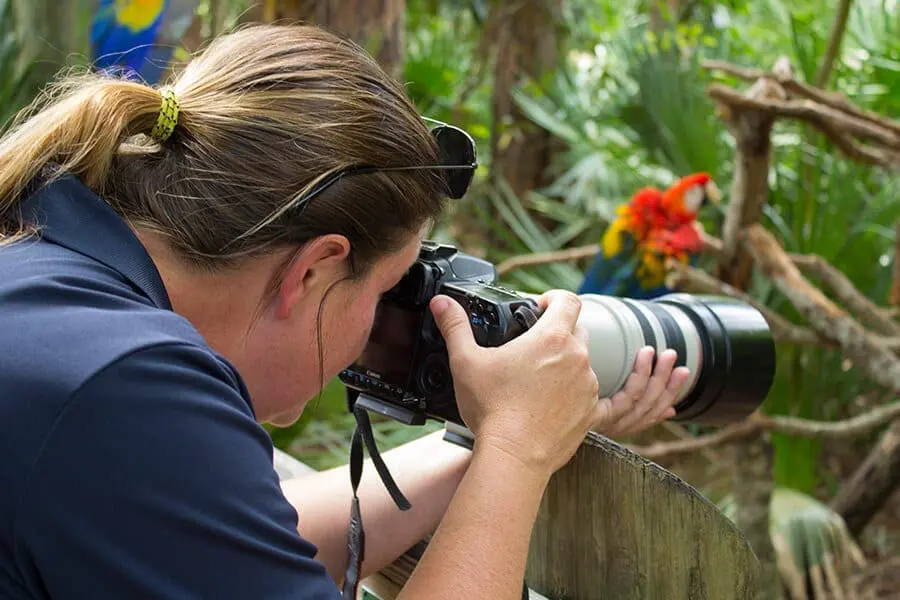

Don’t worry—you don’t need fancy equipment to capture great photos.
Photographs are the perfect souvenirs—they capture moments exactly as they are and you can show them to the world with a tap of your finger. Here are some tips for snapping the best possible Zoo photos.
The Eyes Have It
Focus on those peepers! Eyes are often called the “windows to the soul,” and they’re an essential part of any portrait—human or animal. If your subject is sleeping or facing the wrong direction, explore a different part of the Zoo and come back in a few hours.
Get on Their Level
High-angle photos give the viewer a sense of superiority to the subject, which probably isn’t what you’re going for. Don’t be afraid to crouch down for the perfect shot (as long as you’re not blocking anyone’s path).
Fun in the Sun
Getting the lighting just right is the trickiest aspect of outdoor photography, and it could fill its own blog entry. Generally speaking, the sun should be facing the front or side of your subject; backlighting will cause you to lose some detail. Overcast days are ideal because clouds scatter light throughout the atmosphere.
Afternoon Delight
The lorikeets’ raucous nature makes for some truly hilarious selfies, but this poses a challenge for photographers hoping to capture their vibrant appearance in a more neutral pose. Consider arriving later in the day (after they’ve had their fill of nectar); you’ll find they’re relatively calmer and much more willing to “pose” for you.
Don’t Overlook the Details
Be they furred, feathered or scaled, every animal models a distinct, fascinating texture worth capturing. If you have a photo editing program like Photoshop, experiment with saturation, clarity and contrast—the results can be stunning!

Who knew crocodile scutes were so postcard-worthy?
Animals All Around
While it’s hard to compete with giraffe and jaguars, our wild “visitors” are just as worthy of your attention. Scan the treetops for great blue herons and keep an eye out for turtles splashing in the water. Also, did you know the Zoo is home to 22 acres of restored wetlands? We’ve seen cranes, eagles, otters and even the occasional alligator in this natural Florida wonderland—stand on the dock or hop in a kayak and see what you can find!
Come Back All Year
Seasonal changes can enhance your photographs in dramatic ways. Our grass is greenest and flowers fullest between March and May. Daylight savings time and shorter winter days present the opportunity to photograph animals in the golden light of sunset before the Zoo closes for the evening. Temporary exhibits like dinosaurs and butterflies are worth capturing, too. (Here’s where we shamelessly plug Zoo memberships.)
Practice, Practice, Practice!
Remember, even the most skilled artists know they can always improve their craft. Experience is the best teacher!
Though it’s tempting to go to extreme lengths for the perfect shot, make sure you’re always being respectful of the animals; avoid yelling, taunting or teasing, point the flash away from your subject’s eyes, maintain at least a few feet’s distance in open exhibits like the aviaries and keep your hands to yourself (outside of the Petting Zone, of course).
Don’t forget to tag us on Facebook, Twitter and Instagram. Happy snapping!
